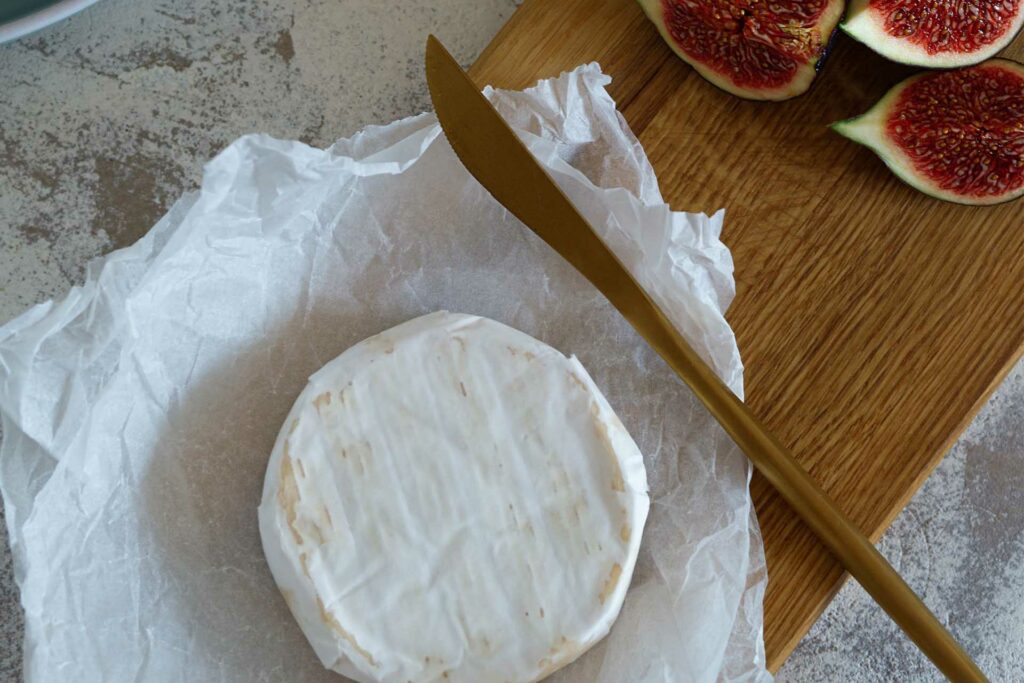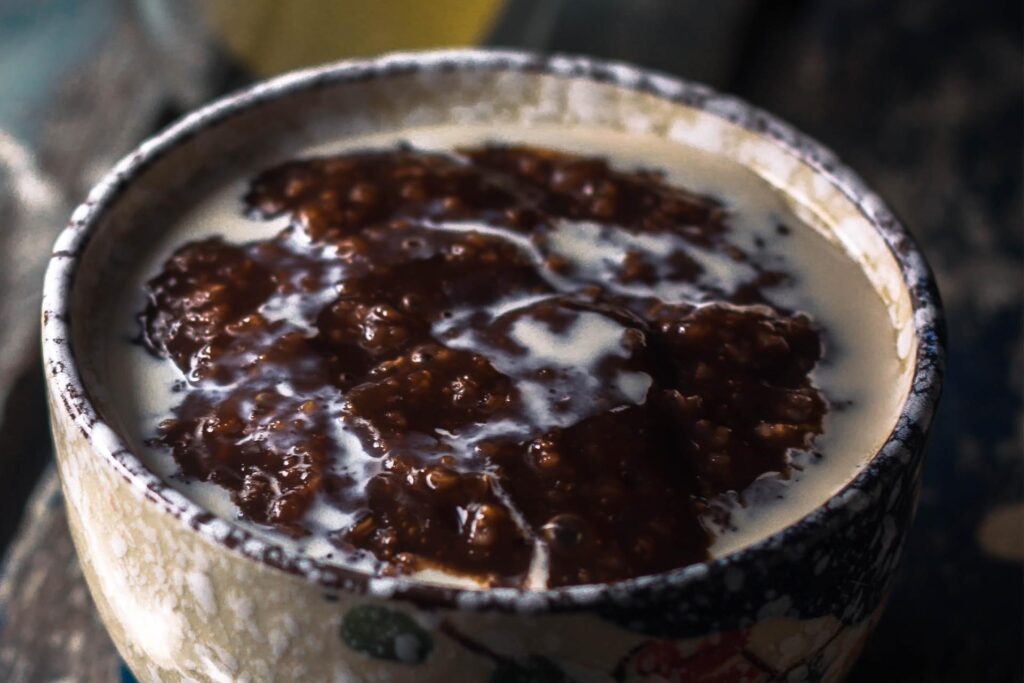Welcome to the delightful world of cottage cheese! If you’re a food enthusiast or someone seeking a nutritious and versatile addition to your meals, you’ve come to the right place. Cottage cheese has been cherished for its health benefits and culinary versatility for centuries. In this blog post, we will embark on a journey to unravel the mysteries surrounding the taste of cottage cheese.
Cottage cheese has gained immense popularity due to its high protein content, low fat levels, and rich nutrient profile. It has become a favorite among fitness enthusiasts, health-conscious individuals, and those seeking a tasty alternative to traditional dairy products. But what exactly does cottage cheese taste like? Let’s dive in and explore the unique taste profile of this dairy delight.
Beyond taste, cottage cheese offers a wealth of historical significance and cultural relevance. Originating in Europe centuries ago, cottage cheese has found its way into the hearts and kitchens of people around the world. Understanding the taste of cottage cheese allows us to appreciate its rich heritage and the role it plays in various cuisines.
Throughout this blog post, we will delve into the basics of cottage cheese, discussing its production process and the different types available. We will then embark on a sensory journey, meticulously describing the taste, texture, and appearance of cottage cheese. Additionally, we will explore the factors that influence its taste, such as the milk source, fat content, culturing process, salt levels, and ingredient quality.
But our exploration won’t stop there. We will also delve into the culinary uses of cottage cheese, both savory and sweet. From mouthwatering recipes to creative pairings, we will provide you with a plethora of ideas to elevate your cottage cheese experience. Whether you’re looking to incorporate it into your breakfast, lunch, dinner, or even dessert, we’ve got you covered.
The Basics of Cottage Cheese
To truly understand the taste of cottage cheese, it’s essential to grasp the basics of this beloved dairy product. Cottage cheese is a type of fresh cheese that is made by curdling milk and separating the curds from the whey. The process begins by adding an acid or rennet to milk, causing it to coagulate and form curds. These curds are then cut into small pieces and gently heated, allowing the whey to separate. Finally, the curds are drained, resulting in the creamy and lumpy texture that cottage cheese is known for.
One of the distinguishing features of cottage cheese is its curds. Unlike other cheeses that are pressed and aged, cottage cheese curds are typically large and have a soft and moist consistency. They are delicate and easily break apart, giving cottage cheese its unique texture. The curds are surrounded by a liquid called whey, which adds a slight tanginess to the overall taste.
Cottage cheese is predominantly made from cow’s milk, but variations using goat’s milk or sheep’s milk can also be found. The choice of milk can influence the taste and richness of the final product. Cow’s milk cottage cheese tends to have a milder flavor, while goat’s milk cottage cheese may possess a slightly stronger and earthier taste. The fat content can also vary, with options ranging from low-fat to full-fat cottage cheese.
In terms of appearance, cottage cheese is characterized by its lumpy and curd-filled structure. The curds are typically white or off-white, while the whey can range from clear to slightly yellowish. The overall visual appeal of cottage cheese may vary depending on the brand and specific production methods.
Describing the Taste of Cottage Cheese
When it comes to the taste of cottage cheese, it’s a delightful blend of mildness and subtle tanginess. The flavor profile of cottage cheese is often described as creamy, slightly sweet, and with a hint of acidity. It possesses a delicate balance that makes it an appealing choice for those who prefer more subtle tastes.
The texture of cottage cheese also plays a significant role in the overall taste experience. The curds, with their soft and moist consistency, melt in your mouth, providing a pleasant creaminess. The curds themselves have a slightly grainy texture, adding a unique dimension to each bite. This textural contrast, combined with the creamy base, creates a satisfying and enjoyable eating experience.
In terms of aroma, cottage cheese is not particularly strong or pungent. It has a subtle dairy scent, reminiscent of fresh milk with a touch of fermentation. The aroma is gentle and understated, further enhancing the gentle and mild nature of cottage cheese.
One of the reasons cottage cheese has gained popularity is its versatility in pairing with other flavors. Its mild taste allows it to complement a wide range of ingredients, both savory and sweet. It acts as a blank canvas, readily absorbing and enhancing the flavors of other ingredients added to it.
Compared to other dairy products, such as yogurt or ricotta cheese, cottage cheese stands out with its unique taste. While yogurt tends to have a tangier and more pronounced flavor, cottage cheese offers a more subdued and gentle taste. Ricotta cheese, on the other hand, has a smoother and slightly sweet flavor, but lacks the curds and texture that make cottage cheese so distinctive.
Ultimately, the taste of cottage cheese can vary slightly depending on factors such as the milk source, fat content, and culturing process. However, the common thread that ties all variations together is the mildness, creaminess, and subtle tanginess that make cottage cheese a beloved choice among cheese enthusiasts.
Factors Affecting the Taste of Cottage Cheese
The taste of cottage cheese can be influenced by various factors, including the milk source, fat content, culturing process, salt levels, and ingredient quality. Let’s explore each of these factors to understand how they contribute to the nuanced flavors of cottage cheese.
1. Milk Source: The type of milk used in the production of cottage cheese can have a significant impact on its taste. Cow’s milk is the most common choice, offering a mild and creamy flavor. Goat’s milk cottage cheese, on the other hand, tends to have a slightly stronger and earthier taste. Sheep’s milk cottage cheese may possess a distinctively rich and tangy flavor. Each milk source brings its own unique characteristics, allowing for a diverse range of taste experiences.
2. Fat Content and Creaminess: Cottage cheese is available in different fat content variations, ranging from low-fat to full-fat options. The fat content can affect both the texture and taste of the cheese. Full-fat cottage cheese tends to be richer and creamier, offering a more indulgent experience. On the other hand, low-fat cottage cheese may have a lighter and more subtle taste. The choice of fat content allows individuals to select the cottage cheese that best suits their preferences.
3. Culturing or Fermentation Process: Some varieties of cottage cheese undergo a culturing or fermentation process, introducing additional flavors and tanginess. This process involves adding cultures or bacteria to the milk, allowing it to ferment and develop a slight acidity. The length of the fermentation process can vary, resulting in cottage cheese with different levels of tanginess. Cultured cottage cheese often exhibits a more pronounced and complex taste profile, adding depth to the overall flavor.
4. Salt Content and Seasoning: Salt plays a crucial role in enhancing the taste of cottage cheese. The amount of salt added during the production process can vary, affecting the overall flavor profile. Saltier cottage cheese tends to have a more savory taste, while unsalted varieties may have a milder and less pronounced flavor. Additionally, some cottage cheeses are seasoned with herbs, spices, or other flavorings, adding a touch of complexity and enhancing the overall taste experience.
5. Freshness and Quality of Ingredients: Like any food product, the freshness and quality of the ingredients used in cottage cheese production can greatly impact the taste. Fresh, high-quality milk will contribute to a superior flavor, while using milk that is past its prime can result in a less desirable taste. Additionally, the quality of the curdling agents, cultures, and other ingredients used can influence the overall taste and quality of the cottage cheese.
By considering these factors, it becomes evident that cottage cheese is not a one-size-fits-all product. The choices made during its production can lead to subtle variations in taste, allowing individuals to find the cottage cheese that best suits their preferences.
Culinary Uses and Pairings
Cottage cheese’s mild and versatile taste opens up a world of culinary possibilities. Its creamy texture and subtle tanginess make it an excellent ingredient for both savory and sweet dishes. Let’s explore the various culinary uses and pairings of cottage cheese to inspire your creativity in the kitchen.
Savory Culinary Uses:
1. Toppings and Fillings: Cottage cheese can be used as a delicious and nutritious topping or filling for a variety of dishes. Spread it on whole wheat toast or bagels, and top with fresh herbs, sliced tomatoes, or cucumber for a satisfying and healthy breakfast or snack. It can also be used as a creamy filling for stuffed peppers, mushrooms, or baked potatoes.
2. Salads: Cottage cheese adds a protein-packed boost to salads. Mix it with fresh greens, cherry tomatoes, cucumbers, and your favorite salad dressing for a light and refreshing meal. It can also be incorporated into pasta salads or grain bowls for added creaminess and flavor.
3. Dips and Spreads: Blend cottage cheese with herbs, garlic, lemon juice, and a touch of olive oil to create a flavorful and nutritious dip or spread. This versatile mixture can be used as a dip for vegetable sticks, a spread for sandwiches, or a filling for wraps.
4. Creamy Sauces: Cottage cheese can be transformed into a creamy sauce by blending it with herbs, spices, and a splash of lemon juice. Use this sauce to dress up steamed vegetables, grilled chicken, or pasta dishes for a healthier alternative to heavy cream-based sauces.
Sweet Culinary Uses:
1. Desserts: Cottage cheese can be transformed into a delightful and wholesome dessert. Mix it with honey or maple syrup, and top with fresh fruits like berries, peaches, or mangoes for a nutritious and satisfying treat. You can also use it as a filling for crepes, pancakes, or blintzes, adding a creamy and tangy element to your sweet creations.
2. Smoothies and Parfaits: Blend cottage cheese into your favorite smoothie recipes for added creaminess and protein. Layer it with granola, fresh fruits, and a drizzle of honey or agave syrup to create a delicious and nutritious parfait. The combination of textures and flavors makes for a delightful breakfast or snack.
3. Baking: Cottage cheese can be incorporated into various baked goods to add moisture and richness. From muffins and cakes to bread and pancakes, replacing a portion of the liquid or fat with cottage cheese can result in a tender and flavorful outcome.
Pairings:
Cottage cheese pairs well with a wide range of foods, enhancing their flavors and adding a creamy element. Here are some suggested pairings to consider:
- Fresh fruits like berries, melons, peaches, or pineapple add a burst of sweetness and juiciness to cottage cheese.
- Vegetables such as cucumber, cherry tomatoes, or bell peppers provide a refreshing crunch and balance to the mildness of cottage cheese.
- Whole grains like oatmeal, quinoa, or whole wheat toast offer a hearty and nutritious base for cottage cheese.
- Nuts and seeds, such as almonds, walnuts, or chia seeds, provide a crunchy texture and added nutritional value.
Experiment with different combinations to find your favorite pairings and create delightful flavor profiles with cottage cheese.
With its versatility and mild taste, cottage cheese can be enjoyed in countless ways. Whether you’re looking for a savory snack, a protein-packed meal, or a delectable dessert, cottage cheese has got you covered.
In the concluding section, we will recap the main points discussed in this blog post and emphasize the nutritional benefits and versatility of cottage cheese. So, keep reading to wrap up this enlightening exploration of cottage cheese!
Final Thoughts
Throughout this comprehensive exploration of cottage cheese, we have delved into its taste, texture, and culinary possibilities. Cottage cheese offers a unique and delightful taste experience with its mildness, creaminess, and subtle tanginess. Its soft and moist curds, combined with a creamy base, create a satisfying textural contrast that sets it apart from other dairy products.
We have also discovered that various factors can influence the taste of cottage cheese, such as the milk source, fat content, culturing process, salt levels, and ingredient quality. These factors contribute to the nuanced flavors and variations found among different types of cottage cheese. Choosing the right combination of these factors allows individuals to find a cottage cheese that aligns with their preferences and dietary needs.
Cottage cheese’s versatility shines through its culinary uses and pairings. Whether enjoyed in savory dishes like toppings, fillings, salads, dips, or creamy sauces, or used in sweet creations like desserts, smoothies, and baked goods, cottage cheese proves to be a versatile and nutritious ingredient. It pairs well with a wide array of foods, adding a creamy and tangy element that enhances the overall flavor profile.
In addition to its taste and culinary applications, cottage cheese boasts numerous nutritional benefits. It is a rich source of protein, making it an excellent choice for individuals seeking a protein-packed food option. Cottage cheese is also low in fat (depending on the chosen variety) and contains essential vitamins and minerals such as calcium, phosphorus, and vitamin B12. These health benefits make cottage cheese a popular choice among fitness enthusiasts, health-conscious individuals, and those looking to maintain a balanced diet.
As we conclude this exploration of cottage cheese, we encourage you to embark on your own culinary journey. Experiment with different flavors, pairings, and recipes to discover your favorite way to enjoy cottage cheese. Whether you incorporate it into your breakfast, lunch, dinner, or dessert, cottage cheese offers endless possibilities for creating delicious and nutritious meals.
So, next time you come across cottage cheese in the grocery store or your refrigerator, embrace its unique taste and versatility. Let your taste buds savor the mildness, creaminess, and subtle tanginess that make cottage cheese a beloved choice among cheese enthusiasts worldwide. Enjoy the wholesome goodness and culinary adventure that cottage cheese brings to your table!





